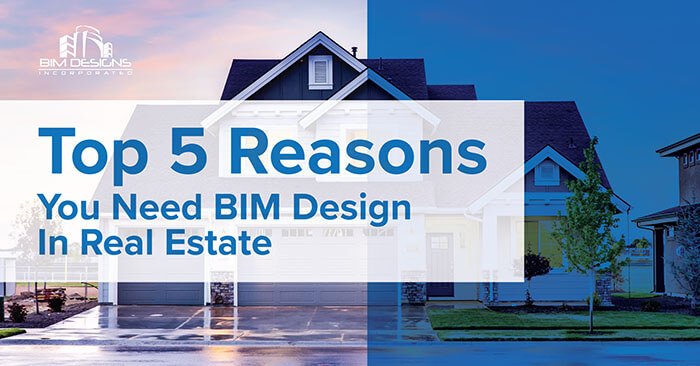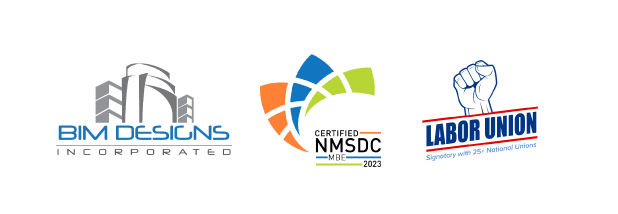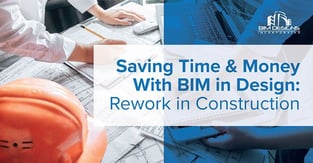
Building Information Modeling (BIM) has become a mainstay in nearly every phase of the construction process. Whether you’re in the midst of modeling, prefabrication, construction or post-construction, BIM has become an indispensable tool. So why not leverage BIM for real estate, too? Not surprisingly, using BIM in design lends itself nicely to helping buyers and sellers make more informed decisions, and it can help agents increase their revenue. Here are the top five reasons you need BIM in real estate.
1. Increase ROI by Selling Faster
Using BIM can help make the purchasing process more tangible for buyers. Any purchase involves a leap of faith. With real estate, this leap of faith often feels like a precarious trust fall. There are so many questions and a lot of money involved. With BIM, however, you can clear up many of the more troubling queries.
For example, a series of 2-dimensional images may not give the buyer a strong-enough sense of a property’s full attributes. There is only so much that can be seen with the naked eye during an in-person walkthrough. To alleviate any doubts of the integrity and construction of the building, one must be able to fully visualize each working part. BIM can eliminate these obstacles and help the buyer decide quicker.
When BIM is used in the design, a seller can give the buyer a comprehensive model of the property. This imaging can include even minute details. The buyer can then explore the property to their heart’s content. This may eliminate multiple time-consuming visits to the property and long lists of questions that could hamper the buying process.
2. Help Buyers Plan for Life in the Building
With BIM, it’s easy for a buyer to imagine their life inside and around the building, especially if the property is still under construction or being built to suit. Without detailed, comprehensive imaging of the building, a buyer is forced to use their imagination. It can be easy for doubts to creep in and stall—or prevent—the sale. With BIM, a buyer has access to every inch of the building. They can, literally, start measuring anything. The buyer can also plan furniture, paint colors, and even potential renovations—all before they get access to the building.
If a property is nearly perfect but not quite adequate, you could use BIM in the design stage to show what modifications would look like. BIM also makes it possible to calculate their costs, and these could be factored into the price.
3. No More Cumbersome Blueprints
With BIM, in-depth computer images on a mobile device can replace blueprints. Even though blueprints provide important information, they can be a lot to lug around. They are also prone to damage and deterioration. And while the different perspectives blueprints present are helpful, a detailed 3D image provides a more comprehensive picture.
Whether you give the BIM design to the buyer, seller, agent, or all three, it only takes seconds to share. Blueprints require endless trips to make copies—not to mention the cost of each set. BIM images are far more convenient and detailed.
4. Eliminate Building Surprises for Peace of Mind with BIM in Design
BIM allows you to have an accurate digital representation of everything from the framing structure to the inner workings of the HVAC system. It gives you a floor-to-beam and everything in-between view of the property. With BIM, you essentially get a detailed MRI of a structure, and this can help enhance both the seller’s and buyer’s sense of confidence.
BIM for Sellers’ Peace of Mind
As a seller, you can confidently advertise the property you are selling and are equipped to answer any questions potential investors or buyers may have about the construction. When investing, the most powerful asset is knowledge, and with BIM, you’re granting an interested investor a storehouse of in-depth knowledge about the property.
For example, a prudent investor may have concerns about the HVAC infrastructure of a building. HVAC typically comprises the brunt of the expense of owning and operating commercial real estate. With a BIM-generated 3D blueprint, you can reassure an investor that each component is sufficient to heat or cool target workspaces. At the same time, you can use a BIM-powered presentation to showcase the strengths of the HVAC system. You can outline selling points such as its efficiency or thoughtful engineering details that make it a convenient solution for the building’s inhabitants.
On the other hand, without BIM, you run the risk of limiting the liquidity of a property. Buyers may be slower to pull the trigger if there are too many questions and not enough answers. BIM solves this problem by “lifting the hood” on a structure so the buyer can take a detailed look inside. BIM grants the seller peace of mind in the value and construction of every little detail of the building he or she is selling.
BIM for Buyers’ Peace of Mind
Without BIM in design, the buyer needs to trust the seller both knows about and discloses all issues. On the other hand, with BIM, the buyer can evaluate the condition of a property from top-to-bottom before committing to a purchase. For instance, with detailed BIM of a structure, you can identify issues such as:
- Potential overloads of the electrical system
- Vulnerabilities in the plumbing infrastructure
- The specs of load-bearing components to make sure they can support increases in weight
- The angle at which the sun hits a room during different times of the year, resulting in varying heating and cooling expenses
- Potential issues with air quality management
Further, you can start thinking about changes that could make the building better-serve your needs. Are the common areas and co-working spaces optimized to enhance productivity? Can work areas, such as those under double-heights, be shifted to places that cost less to keep comfortable? Are there enough bathrooms to meet the needs of each area? With BIM, you can get the answers to a long list of critical questions. Armed with the right information, you are in a better position to make an informed decision.
5. Make the Building’s Upkeep and Renovations Easier
BIM is a great planning and execution tool for both building a structure and keeping it in great shape. If you use BIM in the purchasing process, you can factor in the cost of upkeep or renovations before agreeing to the sale. You can plan out the steps, components, and tools needed to maintain specific aspects of the building. This way, you know what your future inside the building may look like and feel like even when you have to make fixes or changes to the structure.
A real estate purchase is often one of the most important moments of a company’s investment. As with all major choices, the more information, the better. Whether you’re an owner or general contractor, BIM can help empower you to make better real estate decisions.
About BIM Designs, Inc.
BIM Designs, Inc. is an agile BIM design, modeling, consulting, and coordination service provider for architecture, engineering, and construction (AEC) contractors and developers that desire experienced journeymen detailers and engineers for Mechanical, Electrical, Plumbing and Fire Protection (MEPF) modeling, Laser Scanning, and Virtual Design Construction (VDC) projects.
If you need 3D BIM modeling, design, and MEP detailing services, BIM Designs, Inc. (BDI) has the expert tradesmen who know how to precisely design and model your systems. Contact us today for a free estimate or to discuss your project needs.

About the Author
Luke joined the BIM Designs team in June 2020 as the Head of Business Development and helps oversee the business development and marketing team's objectives. With over 8 years of business development and sales experience working with startups, accelerators, investors and global enterprise-level companies, he has successfully helped startups scale their sales operations. Previously, he worked in the biotech industry as a research leader for over 9 years resulting in an IPO in 2011.





